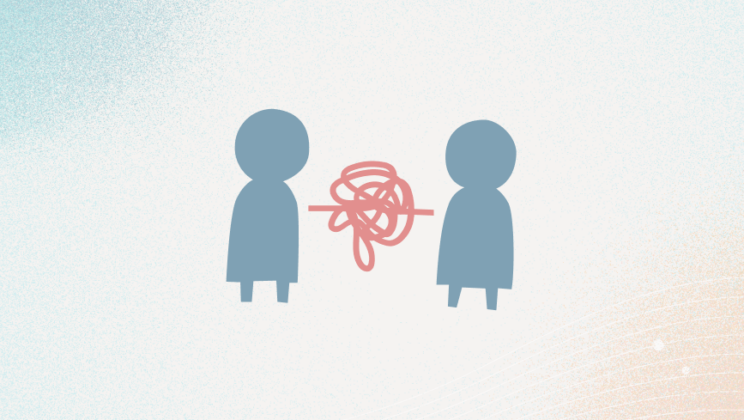Therapist Burnout: Signs, Causes, and Tips to Prevent it
March 1, 2023
People look to their mental health providers to help them manage distress, but we aren’t immune to burnout, stress, and fatigue of our own. The impact of therapist burnout can be significant, making it tough for us to maintain our mental and physical health and deliver the compassionate care we aim to provide.
Therapist burnout affects almost half (45 percent) of therapists and has been on the rise in recent years, largely due to the soaring demand for mental health services. Even more social workers (63 percent) report experiencing burnout. According to the American Psychological Association’s COVID-19 Practitioner Impact Survey:
- 46% of therapists report that they can’t meet treatment demand for existing patients
- 60% don’t have openings for new clients
- 60% have had to seek peer support to deal with burnout
Demand for mental health treatment has skyrocketed since the pandemic—not surprising, as trauma- and stress-related disorders rose from 51 percent to 64 percent between 2020 and 2022, and substance use disorders went from 29 percent to 47 percent during the pandemic. Stress and burnout are driving many mental health professionals out of the field, leaving remaining providers stretched thin.
What is therapist burnout?
Therapist burnout happens when a mental health provider faces chronic stress and lacks appropriate resources, support, rest, and recovery time. Burnout is a complex phenomenon that can involve mental, physical, and emotional symptoms. As therapists, we face unique occupational hazards for burnout because we’re at risk of developing secondary trauma and compassion fatigue from interacting with clients in distress day after day.
Signs of therapist burnout
How do you know if you’re experiencing burnout? Here are the main symptoms.
Mental or emotional exhaustion
Emotional exhaustion is the most commonly reported symptom of therapist burnout. You might feel tired or like you can’t catch up on rest. Increased anxiety or feeling “on edge” can also show up, making it difficult to be fully present with clients. You may even reach a point of dreading your workday.
Cognitive overload can occur when you’re trying to digest too much information or tackle too many tasks at once. When you’re caring for multiple clients and have to document and recall all of these conversations, the brain can become saturated, making it hard to remember details accurately.
Your own mental health may begin to suffer, too, which can lead to:
- Feelings of overload
- Depression symptoms like fatigue, sadness, social withdrawal, or loss of interest
- Anxiety symptoms like irritability, worry, or trouble relaxing
- A decline in empathy or warmth toward your clients
Cynicism or mental distance from the job
Burnout in counselors and other mental health providers can lead to growing detachment from your clients. You might feel a sense of emotional distance or disengagement from them that gets in the way of building rapport. If you don’t feel invested in your clients’ journey, your guidance may become more generic, less personal, and ultimately less helpful.
Decreased feelings of personal accomplishment
An often overlooked sign of therapist burnout is feeling like you aren’t making a difference. You may start to wonder if your work really matters or if you’re in the right field at all. You might consider a shift to a different role, such as an administrative, teaching, or consulting job, in order to avoid the pressures of day-to-day client treatment. Some providers decide to leave the field altogether because of burnout, which is understandable but unfortunate since getting independently licensed is no easy task, and many of us are passionate about this work.
Causes of therapist burnout
Why is burnout plaguing mental health providers at such high rates? The surge in demand for mental health services during the pandemic left many providers working harder than ever and feeling that they couldn’t help everyone they wanted to help. We’ve also been personally impacted by COVID-19 and its associated stressors. But therapist burnout was a problem long before the pandemic. Here are a few main causes beyond increased demand.
Organizational hazards
Workload. Heavy, unsustainable workloads are a leading cause of burnout in counselors and other providers. Whether it’s working long hours, time pressure, or too many non-clinical responsibilities such as administrative paperwork or being asked to do tasks that we don’t have training to do well, excessive demands make it difficult to stay energized and feel effective.
Work environment. Research suggests that working in a private setting, where you have more control over your hours and caseload and fewer administrative tasks, carries a lower risk of burnout than working in the non-private sector.
Emotional fatigue. Burnout is common in environments with high levels of client contact. Mental health providers not only interact with clients daily, we see people at their lowest and most vulnerable, and are expected to bring genuine empathy and effective support to every situation. We often have to show one emotion while experiencing a conflicting one, which can also raise the risk of burnout.
Role conflict or ambiguity. Role conflict happens when a person feels they’re being asked to do conflicting tasks or act in ways that contradict their values. Role ambiguity happens when what’s expected of us is unclear; for example, being asked to write medical leave letters when you don’t have time carved out for it and it’s a request better addressed by a medical provider.
Slow progress with clients. Some clients improve quickly while others need more time. Feeling like you aren’t making progress with one or more clients and continuing to witness their suffering can also contribute to therapist burnout.
Lack of control. Whereas professional autonomy—the ability to independently manage sessions and workplace hazards—promotes a sense of efficacy, micromanagement and lack of influence are catalysts for burnout.
Isolation. Being a mental health provider can be isolating—it’s the confidential, one-on-one nature of our work. Physical and emotional isolation can make it difficult to truly connect with our clients.
Lack of recognition and reward. Recognition for good work can be hard to come by for mental health providers. And despite rigorous requirements to enter the field and heavy job demands, mental health providers are generally underpaid. Without adequate pay and recognition, providers can quickly burn out.
Cultural factors
BIPOC therapists may be at higher risk for burnout amid the fallout from the pandemic. Existing health disparities, coupled with the disparate effects of the pandemic and increased racial violence, intensify the collective trauma in the BIPOC community. As a result, more BIPOC clients sought services from providers who share their cultural backgrounds. The heightened demand and high levels of burnout have led therapists of color to consider leaving the field, contributing to the therapist shortage.
Complex client needs
Having many clients with complex needs may increase the risk of therapist burnout. Working with clients who display aggressive behaviors, suicidal ideation, or other stressful symptoms can require a deep investment of time and energy. Similarly, frequent client emergencies and crises can make it tough to tend to your own needs and show up as your best self. If we aren’t careful, we may end up carrying our clients’ pain, which can lead to secondary trauma and anxiety, depression, or other mental health issues.
Tips to prevent or address therapist burnout
If you recognize the signs of therapist burnout in yourself, consider taking a few steps to ease the pressure and make your job manageable again.
1. Ask for clarification
Burnout isn’t an individual problem; it’s often an organizational one. This means that while there are steps you can take to protect yourself, you may also need to talk with your supervisor about the challenges you’re facing to see if they can advocate for organizational changes to improve your work-life balance. For example, if you’re unsure about the expectations of your role or how to reconcile conflicting demands, consider going to your practice manager or supervisor and asking them for guidance. If they aren’t available, colleagues may be able to share how they’re navigating similar challenges.
2. Check in with yourself
Take time each day to evaluate whether your emotional and physical needs are being met and if there are steps you can take to tend to them. This will look different for everyone. Some providers benefit most from rejuvenating contact with other people who can be supportive and “give” in the relationship, without you always having to be the giver. Some may decide they need to re-evaluate their needs for physical rest—maybe eight hours isn’t enough during times of exceptional strain. This type of self-awareness can help you reduce therapist burnout symptoms and sustain your career.
3. Shift your mindset
When cynicism, detachment, or depersonalization starts to surface, explore whether adopting a different attitude may be helpful. Recognize those who seek your help as fellow sojourners in this world—we’re all in this together, whether that happens to be during a pandemic or the most unremarkable of times. One useful practice is to assume everyone is doing the best they can. Every person’s life journey is unique, and they won’t all have the same coping skills and resources.
4. Carve out time for self-care
As clinicians, we often have high personal expectations and overextend ourselves to help as many people as we can. But if we don’t prioritize caring for ourselves, our risk of burnout and harm to our personal lives and health grows. “Self-care is not a narcissistic luxury to be fulfilled as time permits; it is a human requisite, a clinical necessity, and an ethical imperative,” John Norcross and Gary VandenBos wrote in Leaving it at the Office: A Guide to Psychotherapist Self-Care.
What does self-care mean to you? It could include nutritious food, restorative sleep, exercise routines, spending meaningful time with people you trust, practicing mindfulness, or carving out time that can’t be intruded upon by sessions or other demands.
Self-compassion is a crucial self-care tool for mental health providers. We can start by giving ourselves the same permission we give our clients to set expectations, recognize suffering without judgment, and feel overwhelmed at times. You aren’t alone—most of us feel this way sometimes.
5. Seek therapy
As providers, we may think we should be able to manage it all, but that’s an unrealistic expectation for any human being. Focusing on our clients’ needs and restraining our own feelings often leaves little room for attending to our own needs. We need people we can share our honest feelings with, and who listen to us the way we listen to others. While friends and loved ones can help, a skilled mental health professional can more effectively support your personal and professional growth. Yet more than half (60 percent) of providers are reluctant to seek their own mental health support, even though they know they’d benefit from it.
6. Ask for support and resources
Since mental health providers often lack breaks and exposure to people other than their clients, it’s especially important to reach out for social support. Talking with colleagues or supervisors, joining a professional association, or participating in consultation groups can help minimize feelings of isolation, improve problem-solving, and increase feelings of personal accomplishment—all of which can reduce the risk of therapist burnout.
How does Lyra Health help guard against therapist burnout?
Lyra has a multi-pronged strategy to protect providers in its network from burnout:
- Supervisors are available and understand if you need someone to talk to, or some time off.
- Lyra’s focus on measurement-based care gives providers a clear way to measure the success of treatment. This can provide reassurance that the work makes a difference.
- Lyra provides digital resources like telehealth support and digital lessons.
- Lyra’s large provider network allows us to easily refer clients for specialized care if needed, so every client is well cared for.
- Lyra empowers therapists to have control over scheduling their sessions.
- Compensation matches the value of providers’ work, giving us the recognition and reward we need.
Our providers conduct treatment in-person and via telehealth and enjoy flexibility in their work hours and location. As a Lyra provider, you have access to supportive managers, clinical consultation with colleagues, and career growth opportunities with a company that cares about you as much as you care about your clients.
Maximizing the rewards of our work
As mental health providers, our work can be deeply fulfilling, but it also comes with unique risks and vulnerabilities. By taking personal precautions and working with our supervisors to create supportive work environments and work-life balance, we can position ourselves to make a positive impact and stay in the field we love.
Learn more about a rewarding mental health therapist career with Lyra
Author
Dorin Captari-Scirri
Dorin is a licensed professional counselor and has a Ph.D. in Counselor Education and Supervision with a research focus on burnout and counselor wellness. He has extensive training in evidence-based trauma treatment modalities, dialectical behavioral therapy, and multicultural and strength-oriented counseling.
Explore additional blogs

Mental health tips
A Guide for Setting Boundaries in Relationships

Mental health tips
Moving From Comparative Suffering Toward Compassion

Mental health conditions